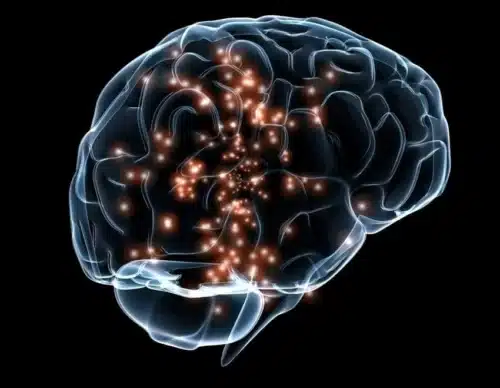Researchers from China have developed a new approach that uses nasal spray to deliver magnetic nanoparticles to the brain that can enhance the effects of transcranial magnetic stimulation (TMS)

Conventional transcranial magnetic stimulation (TMS) therapy uses an electric current that is passed through an electric coil positioned outside the skull, this creates a magnetic field that activates brain cells by causing an additional electrical current inside the brain. But, the stimulation is often insufficient to penetrate far enough into the brain to reach the areas that require treatment. Hence, researchers demonstrated new research that uses magnetic nanoparticles supplied intranasally (through the nasal) which can make neurons more responsive and magnify the magnetic signal from TMS to reach deeper brain tissue, thereby improving recovery after ischemic stroke.
“We were able to overcome the blood-brain barrier and send enough nanoparticles into the brain to use in combination with TMS simulation to improve recovery from stroke. TMS devices are already used for the clinical treatment of neurological disorders but have severe limitations in terms of stimulation strength and depths of the brain they can penetrate,” says Dr. Gang Ruan, Study Corresponding Author, Xi’an Jiaotong-Liverpool University. He continued “By non-invasively putting magnetic nanoparticles into the brain, we can amplify and enhance the TMS stimulation effects on neurons, making the treatment more effective. Showing it is possible to use nanoparticles in this way paves the way for medical applications of nanoparticles for other neurological disorders.”
The researchers used iron oxide nanoparticles that are non-toxic and biodegradable, these particles are already being used to treat iron deficiency. The safety to use modified nanoparticles in clinical studies is to be analyzed, but they have the potential to be used in conjunction with TMS and other techniques such as brain imaging to get a better understanding of how the brain functions and advance the treatment of neurological disorders.
“The coating causes the nanoparticles to stick to the blood-brain barrier, increasing their chances of passing through it. Without this coating, the particles just bounce back from the barrier instead of crossing it. The modifications of the iron oxide particles also ensure that the nanoparticles can stick to the neurons and increase their responsiveness to TMS stimulation.” says Dr. Gang Ruan. “Many scientists still think it is impossible to non-invasively send enough nanoparticles into the brain to affect brain function. Yet we have shown that it is possible. We combined the expertise of our team in four different disciplines, materials science, biophysics, neuroscience, and medical science, to push the boundaries of our knowledge and challenge what is currently thought in the field.”
Click here for the Published Research Paper







